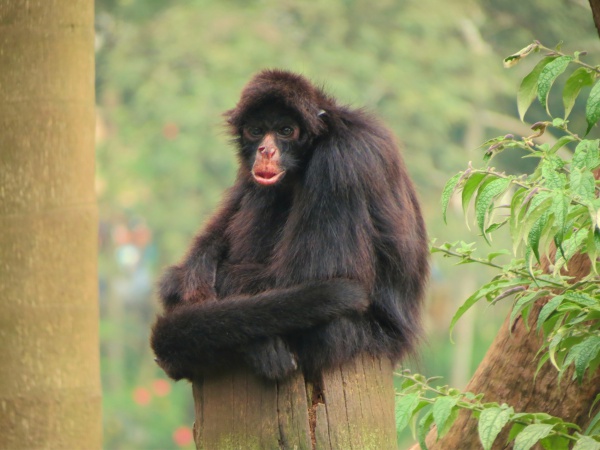Facts About Black-faced Spider Monkey
The Peruvian spider monkey, also known as the black-faced black spider monkey, is a captivating species native to Peru, Brazil, and Bolivia. These monkeys are quite large, with bodies measuring around 2 feet in length and tails extending up to 3 feet. One distinctive feature is their vestigial thumb, which aids them in swinging through the trees using brachiation.
They live in groups of 20 to 30 individuals, but these groups can fluctuate based on food availability. Their diet primarily consists of fleshy fruits, but they also consume leaves, insects, and small animals when fruit is scarce. Female spider monkeys tend to separate from the group to give birth, typically in the fall. These nimble creatures can live up to 20 years.
Peruvian spider monkeys inhabit central-northern Bolivia, northeastern Peru, and the central-western Brazilian Amazon. They prefer lowland forests but can be found in various habitats. These monkeys form territorial bands, and the size of these bands can vary with the seasons, especially when females leave to give birth. They often compete with other monkey species for food and territory.
While they primarily consume fruit, they switch to leaves and other foods when fruit is limited. Their foraging habits play a crucial role in seed dispersal within the Amazon rainforest.
Reproduction can occur at any time of the year, with most births taking place in autumn after a gestation period of about 140 days. The young monkeys become independent around 10 months old.
Unfortunately, Peruvian spider monkeys are endangered due to human activities and habitat loss. They are listed as Endangered on the IUCN Red List. Conservation efforts, including reintroduction programs, are underway to help preserve this species.
Peruvian spider monkeys differ from their relatives in terms of chromosome number and specific chromosomal differences. Other related species include the Central American spider monkey, brown spider monkey, and white-bellied spider monkey. All these species share common traits like a prehensile tail and thumbless hands, which are characteristic of spider monkeys.

 Chile
Chile